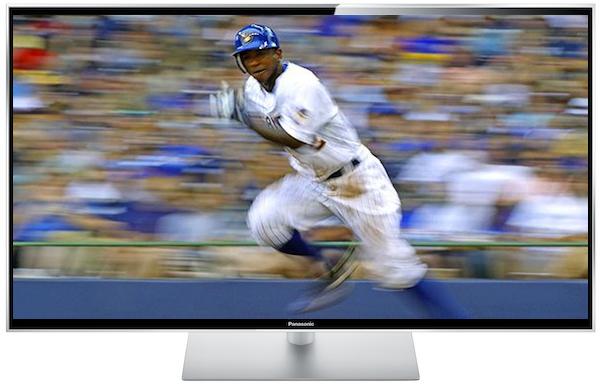Could it be compression artifacts from satellite/cable?
Why Do I See Motion Blur on My Plasma TV?

Q I thought that plasma TVs don’t suffer from motion blur, but I definitely see it when watching with my new Panasonic TC-P60ST60 plasma. Is there some setting I have configured incorrectly, or was I wrong in thinking that plasma tech is free from motion blur? —Bob Shedlock / Strongsville, Ohio
A Motion blur generally isn’t a problem with plasma TVs. That’s because the RGB subpixels in a plasma display can rapidly switch between an on and off condition (the rate is usually stated by manufacturers as 600 Hz, though there’s marketing-speak involved in that spec). Contrast that with LCD tech, where the liquid-crystal material in the display panel isn’t able to twist/untwist quickly enough to avoid a slight degree of overlap when displaying successive video frames—a cause of motion blur. Even sets with a 120- or 240-Hz refresh rate are subject to blur when displaying fast-motion images unless there’s some kind of additional backlight scanning/strobing or motion interpolation processing going on.
That said, I’ll grant that what you’re seeing on your plasma actually is motion blur, except in this case it’s likely an artifact present in the source instead of something generated by the TV. Let me explain. Most Hollywood films and TV dramas are shot at 24 frames-per-second (fps) rate. That rate isn’t fast enough to record blur-free images on fast-motion scenes and camera pans, however, so a degree of blur ends up being captured in each frame. Why shoot films at 24 fps if it adds blur? Because motion-picture film was standardized at a 24 fps rate in the early days of sound cinema, audiences became used to the look (the “film look”), and the tradition has continued into the present day. Even high-def and 4K video cameras used for professional production usually provide a 24 fps mode to emulate a film look.
If you want to play with your Panasonic plasma’s settings to try and eliminate blur, try switching the set from its default 60 Hz to the 96 Hz mode. This reportedly reduces the blur/judder in film-based programs, though it’s also said to add a slight amount of flicker to images. You might also want to enable the set’s Motion Smoother mode. Doing so will introduce a degree of Soap Opera Effect, though it may not be as noticeable at the mode’s Weak setting. Anyway, since your eyes are apparently sensitive to motion blur, so you might actually prefer SOE to blur.
- Log in or register to post comments


I have a Panasonic Plasma and know what he's talking about. It's for sure related to source and thus there's confusion between the plasma and the source. Turning on the motion feature can make the picture a bit jittery so I don't enable it.

24fps is simply not enough.
If a camera is moving and only 24fps are recorded, you'll always have an unfocused moving picture.
The explanation provided by Mr. All Griffin are dead on.
Like he said; it's not the plasma TV's fault, it's the source's fault, the movie industry with old and sub-standards.
If we can improve that deficient standard by say, 96fps, that would be a step into the right "moving" direction, without blurring our 'cinema reality'.
We have much much progress to evolve in cinema, and even in intelligent sound envelopment.
We're better that 20 years ago, but wait an other 40 years or so.
We are moving at the slowest turtle paste when it comes to improving our technologies, as to what they are trying to make you believe.
Eventually, perhaps 50 years from now we'll finally get true dimensional holographic moving pictures (without 3D or 4D glasses), with 448 frames per second, and a high resolution 64K picture.
Then we'll picture back 50 years in the past, and realize how truly far behind we were back then (meaning today).
The problem with our world is that we cannot access the future fast enough, and with a slow rate we live in a blurry world of blurry on-screen pictures; plasmas and OLEDs included.

Except higher frame rates look horrible. They're fine for sport and documentaries, but they make everything look cheap and nasty in dramatic cinema.

Say that the film was recorded @ 48fps, and that it was also transferred on Blu-ray @ 48fps, and that your Blu-ray player allows for perfect 48fps video reproduction, and that your HDTV is compatible with 48fps.
What would you see?

24P content aside, my Panasonic Plasma has noticeable motion blur in games at 60 FPS compared to the Sony HD CRT I had previously. Batman Arkham Asylum is a good example of a game where this is apparent. It's not terrible, but I was surprised to see it after hearing so much about plasma displays having "zero" motion blur.























































